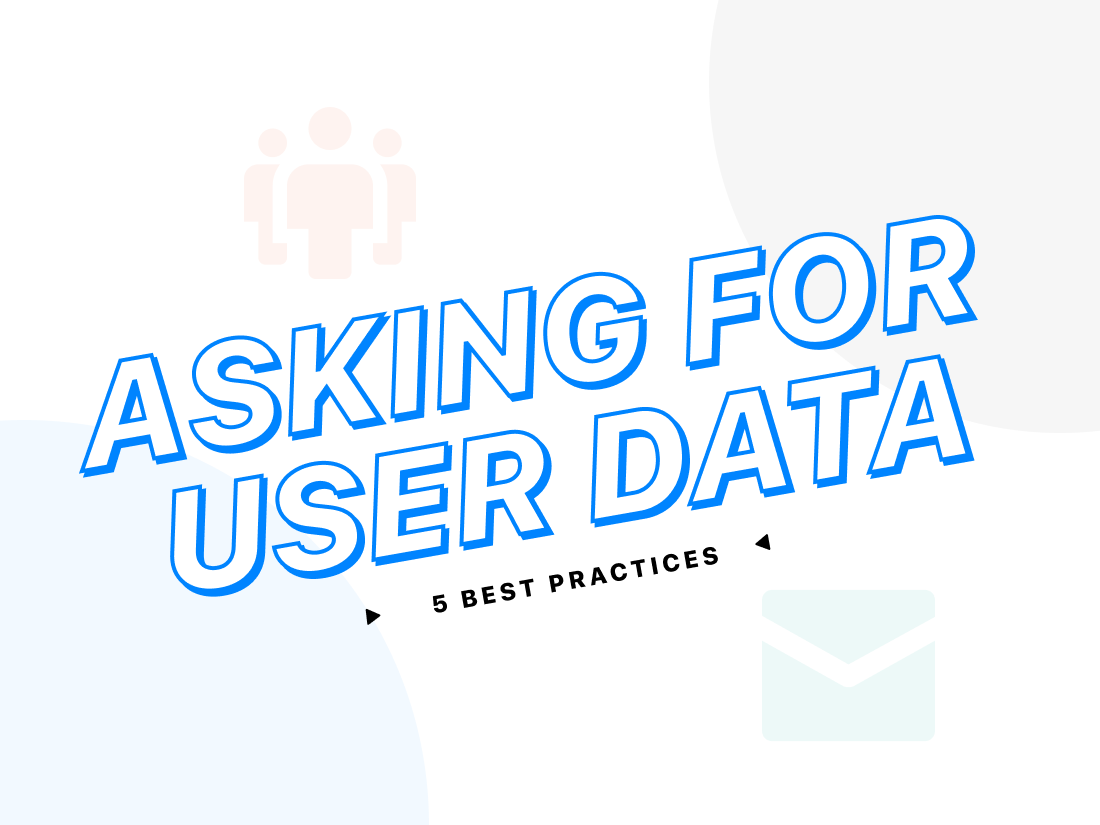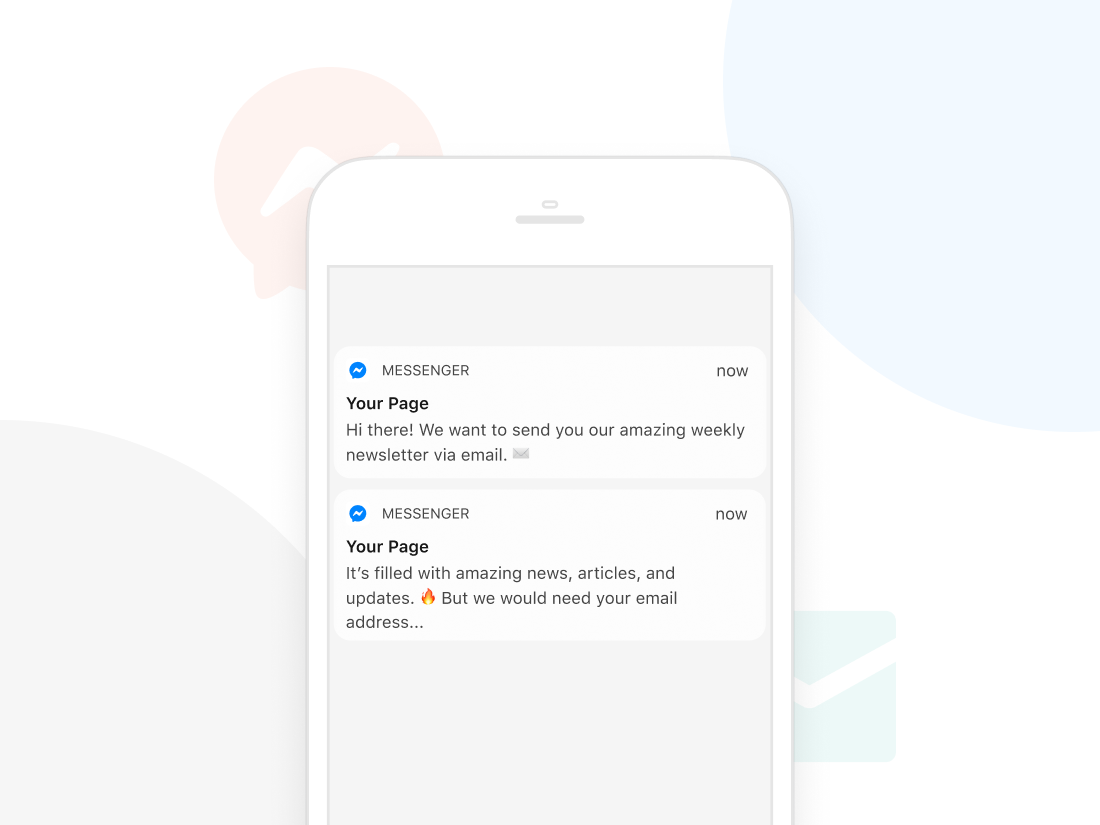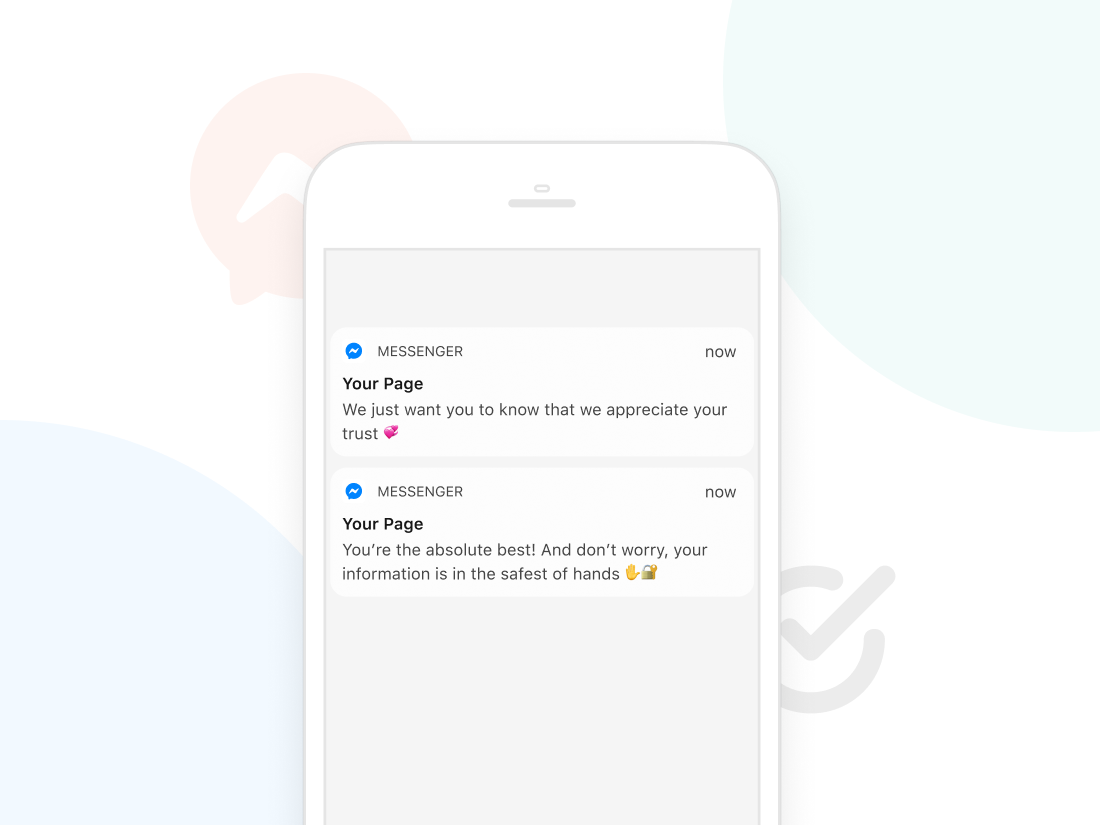5 Best Practices: Asking For User Data On Messenger

Asking your Messenger subscribers to give you personal information is a great way of building email lists, phone number lists and finding out where your audience is from.
Getting people to part with their data, these days, can be an exciting challenge. You wouldn’t give a stranger your email address in the streets. Or post your phone number to your social media accounts.
But in the private and conversational sphere of messaging apps, people are generally more inclined to trust the person they’re chatting to. This doesn’t mean that your Messenger subscribers will easily part with their private and personal data, of course!
So, how do you go about asking your subscribers for things like their email addresses, locations, or phone numbers?
Stick to these best practices to make sure you are successful when asking subscribers for data on Messenger using I AM POP’s ‘Ask for user data’ component!
1. Know your audience
This might seem like a no-brainer, but when you’re trying to persuade someone to do something, it’s very important to know who you’re speaking to.
As a Messenger marketing expert, we’re sure you’re already aware of this. But here are some questions you should keep in mind before you ask your audience for their personal data:
- What segment of your audience will you be asking for data?
- What kind of content have you been sending these subscribers, so far?
- What have the responses been?
- What does this say about your specific audience’s expectations?
Try to gauge the type of people you will be asking for data. Form a mental image of this audience. Bear in mind the context of your request, as well.
For instance, what does the introduction flow to your channel say? What was the last broadcast you sent to your target audience? And how are you going to follow up on your request for data?
Thinking these things through will help you come up with the best possible copy for your data request.
2. Explain the benefits
Another crucial thing you should bear in mind is: how will you use the data you're requesting to benefit your subscribers. What’s in it for them?
Take this into consideration, and show that you respect your audience, by emphasizing that the relationship is reciprocal, that it's not just about you.
If you’re going to ask your users for their email address, so that you can send them your weekly newsletter, for example, tell them about the amazing content included in this weekly update.

If you ask for the email addresses of a segment of your audience that you know will attend a certain event, tell them you will be able to send them a large-sized, high quality aftermovie more applicable to an email than to Messenger. This shows the relevance of your request.
And these things also tie into our next best practice, which is…
3. Be transparent about what you will do…
When asking a specific segment of users for their location, tell them exactly why you want that information, and how you are going to use it.
For instance, a great reason to ask subscribers for their location would be in the context of a band on tour. Tell subscribers you will send them an update the moment your band arrives in a town near them.

Transparency about your intentions is a sign of respect for your audience’s privacy. Make this as clear as possible in the communications surrounding your data request.
4. …and what you won’t do
Equally important, of course, is telling your readers that you won’t use their personal information to spam their email addresses or their personal phone numbers. As logical as this may seem to you, there's no harm in trying to give your subscribers some peace of mind.
Tell them not to worry! Be sincere and transparent about your intentions. And try using emojis or a GIF to add a little charm to your request. It’s bound to take the edge off - although we’re sure you Messenger marketing experts are well aware of the persuasive powers of authentic, conversational copywriting.

All jokes and charm aside: be clear and transparent about what you will and will not be using your subscribers’ data for. It will make it more likely for them to provide you with the information you ask for.
P.s. Don’t forget that you need to comply with GDPR regulations in case of EU resident subscribers.
5. Be considerate - it pays off!
Most of the above is probably common sense to you. So we imagine this last piece of advice is, too. You’re asking your subscribers for something - be humble and polite when making a request. Instead of being demanding, try being understanding.
Thank your subscribers - sincerely - in case they give out the information you requested. We live in a world of increasing privacy concerns, and showing that you’re mindful of this fact is going to be appreciated. Trust us!

If you have any questions, any tips or tricks to add to this list, or need advice on how to integrate I AM POP’s ‘Ask for user data’ component in your Messenger marketing strategies, feel free to get in touch!
By the way, we've collected and uploaded our most popular resources. You can download these resources for free!
Or why don't you connect to I AM POP directly through Messenger at https://m.me/bypophq